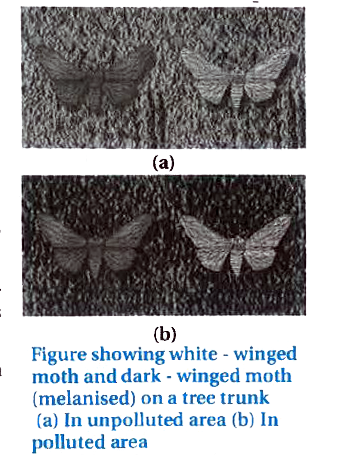Describe various biochemical evidences or molecular evidences ofevolution.
Text Solution
Among diverse organisms, the similarities in proteins and genes performing a common function indicates common ancestry.
The metabolic process, in different organism are also similar, thus also points in same shared ancestry.
Evidences from Embryology (How embryology helps in the study ofevolution) : Organisms that show common descent show embryological patters on which they later build their adult patterns.
This was first observed by Von Baer.
Later Ernest Haeckel reinterpreted Baer.s law in forms of recapitulation theory in the light of evolution.
The theory ofrecapitulation or biogenetic law states that ontogeny (development ofembryo) recapitulates phylogeny (ancestral sequence).
This means that the life history of an animal reflects its evolutionary history.
For example during the life history, frog.s tadpole larva resembles fishes the ancestors of Amphibia.
The presence of gill clefts in all vertebrate embryos including human provides a strong evidence in support of organic evolution.
In the same line of argument, similarities in proteins and genes performing a giving function among diverse organisms give clues to common ancestry.
These biochemical similarities point to the same shared ancestry as structural similarities among diverse organisms.
Man has bred selected plants and animals for agriculture, horticulture sports or security.
Man has domesticated many wild animals and crops.
This intensive breeding programme has created breeds that differ from other breeds. (eg. dogs) but still are of the same group.
Another interesting observation supporting evolution by natural selection comes from England.
In collection of moths made in 1850s in before industrialization set in it was observed that there were more white-winged moths on tree than dark winged or melanised moths.
However, in the collection carried out from the same area but after industrialization Le. in 1920, there were more dark winged moths in the same area i.e. the proportion was reversed.
The explanation put forth for this observation was that .predators will spot a moth against a contrasting background.
During post industrialization period the tree trunks became dark due to industrial smoke and soots.
Under this condition the white winged moth did not survive to predators, dark winged or melanised moth survived.
Before industrialization set in thick growth of almost white-coloured lichens covered the trees in the background the white winged moth survived but the dark coloured moth were picked out by predators.
Lichens can be used as industrial pollution indicators.
They will not grow in areas that are polluted.
Hence, moths that were able to camouflage themselves Le. hide in the background, survived.
This understanding is supported by the fact that in areas where industrialization did not occur ego in rural areas the count of melanic moth was low.
This showed that in a mixed population those that can better adapt, survive and increase in population size.
No variant is completely wiped out.
Similarly, excess use of herbicides, pesticides etc has only resulted in selection of resistance varieties in much lesser time scale.

This is also true for microbes against which we employ antibiotics or drugs against eukaryotic organisms / cells.
Hence, resistant organisms / cells are appearing in a time scale of months or years and not centuries.
This also tells us that evolution is not a directed process in the sense of determinism.
These are examples of evolution by anthropogenic action.
It is a stochastic process based on chance events in nature or chance mutation in the organism.
|
Topper's Solved these Questions
- EVOLUTIONBOOK - KUMAR PRAKASHANCHAPTER - EVOLUTIONEXERCISE - SECTION - B (Difference / Scientific Reasons) (Give differences)
2 Videos
- EVOLUTIONBOOK - KUMAR PRAKASHANCHAPTER - EVOLUTIONEXERCISE - SECTION - B (Difference / Scientific Reasons) (Give scientific reasons)
2 Videos
- ENVIRONMENTAL ISSUESBOOK - KUMAR PRAKASHANCHAPTER - ENVIRONMENTAL ISSUESEXERCISE - Section - F (Multiple Choice Question (MCQs))(MCQs ASKED IN COMPETITIVE EXAM)
22 Videos
- HUMAN HEALTH AND DISEASE BOOK - KUMAR PRAKASHANCHAPTER - HUMAN HEALTH AND DISEASE EXERCISE - Section - F (Multiple Choice Question) (MCQs Asked In Competitive Exam))
33 Videos
Similar Questions
Knowledge Check
Evident
AProminetBSeenCObservedDQuite clearWhich is a set of evidence of evolution
AHomologous and analogous organsBHomologous and vestigial organsCAnalogous and vestigial organsDAll the above.Which is a set of evidences of evolution ?
AHomologous and analogous organsBHomologous and vestigial organsCAnalogous and vestigial organsDAll of the above
What is morphological evidence of evolution?
View SolutionWhich is a set of evidence of evolution
View SolutionMention any three types of molecular evidences of evolution with example.
View Solutionwho disapproved the theory of embryological evidence as to the evidence of evolution ?
View SolutionWhat is 'empirical evidence'?
View Solution
